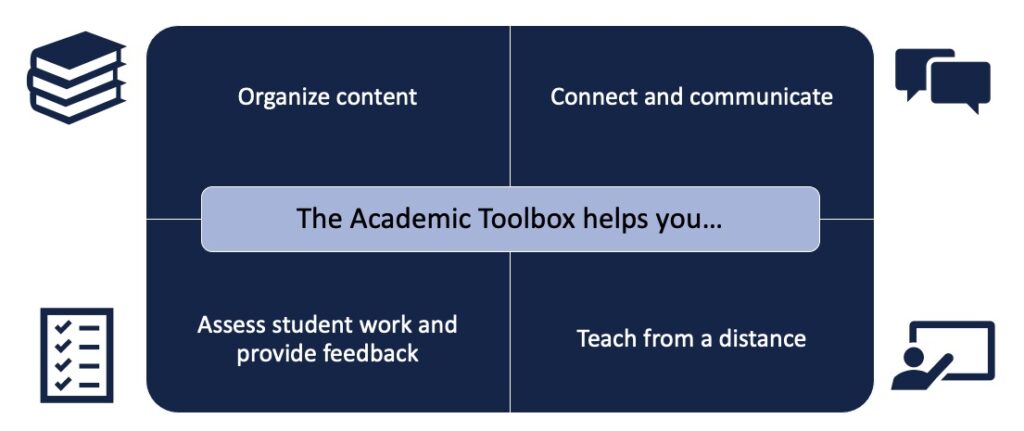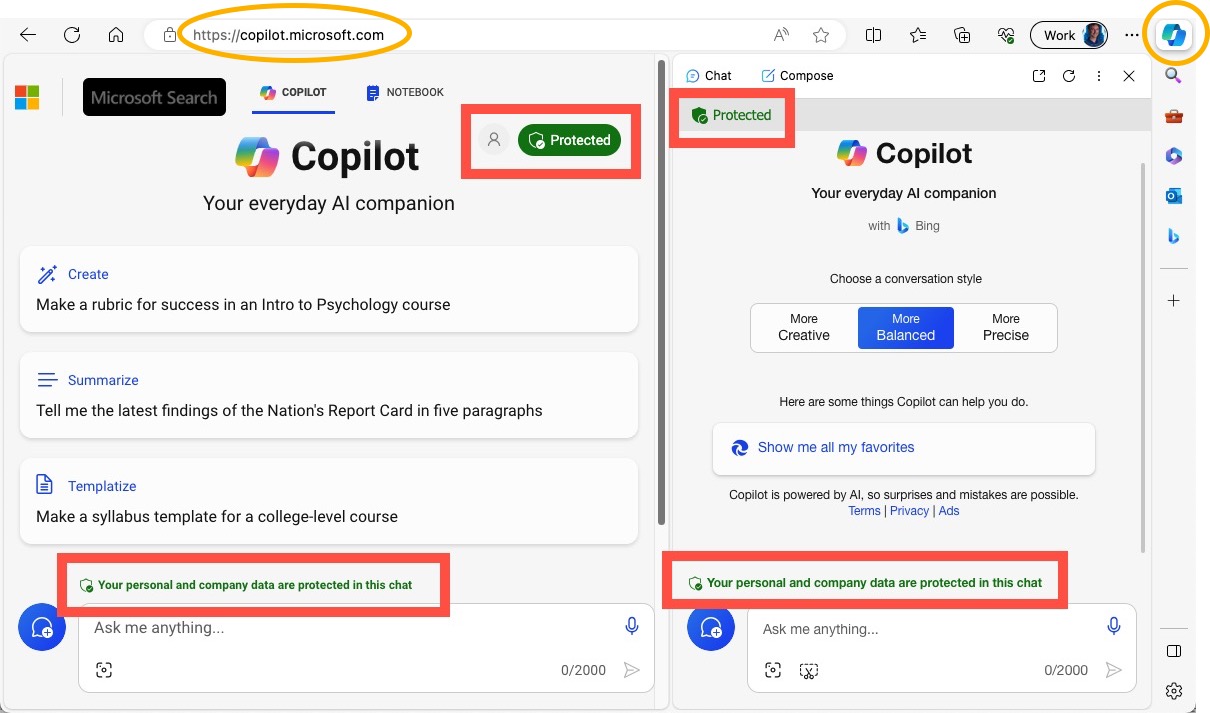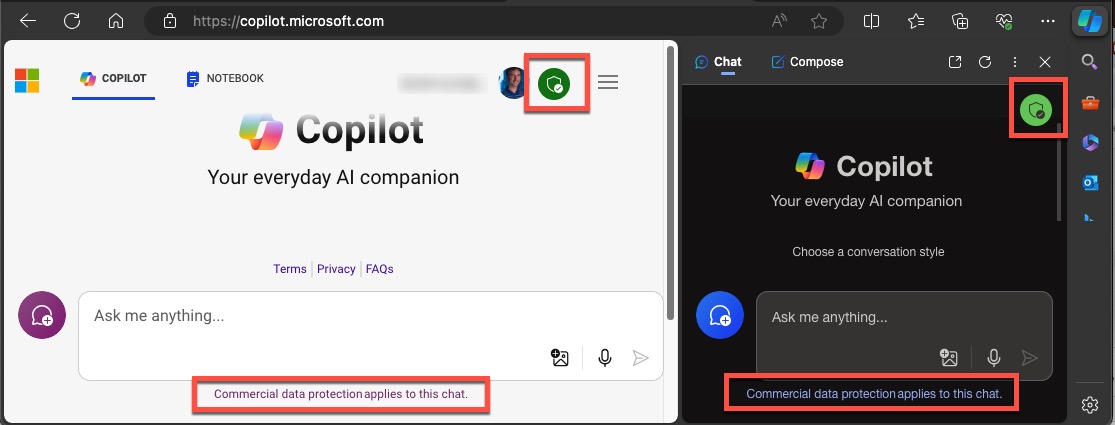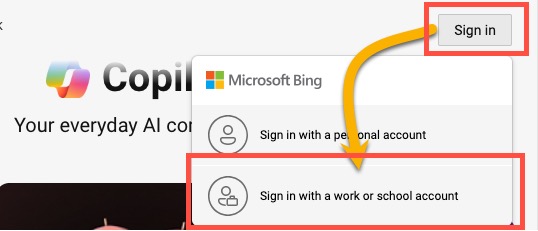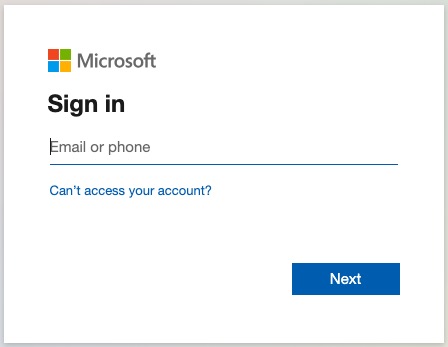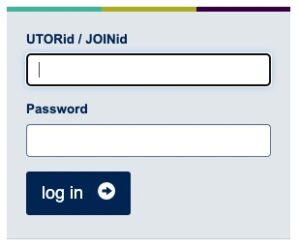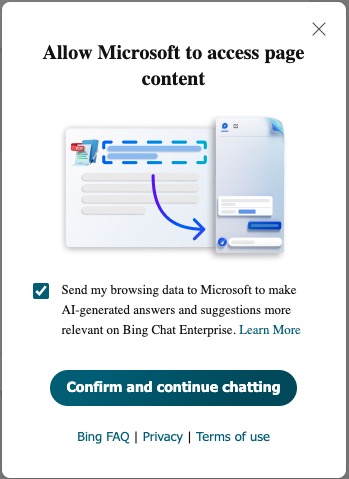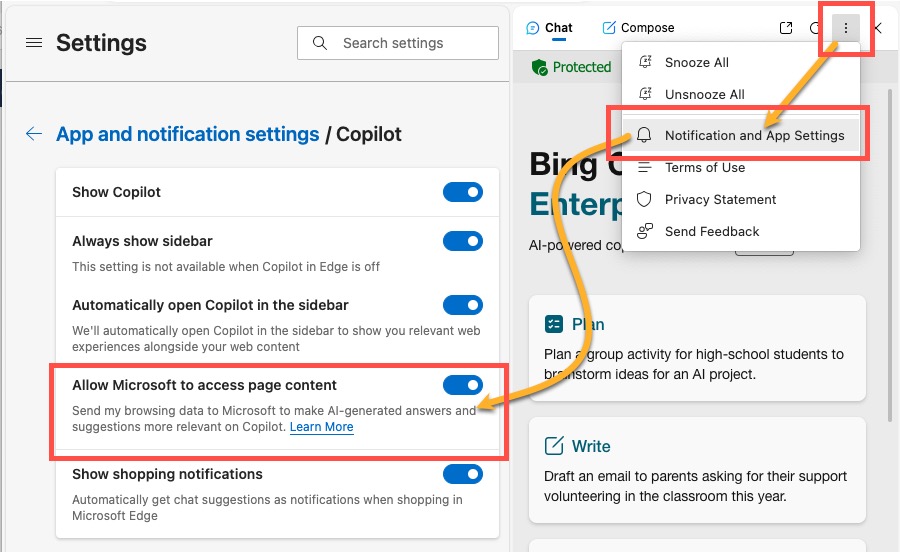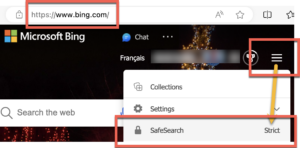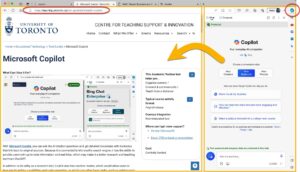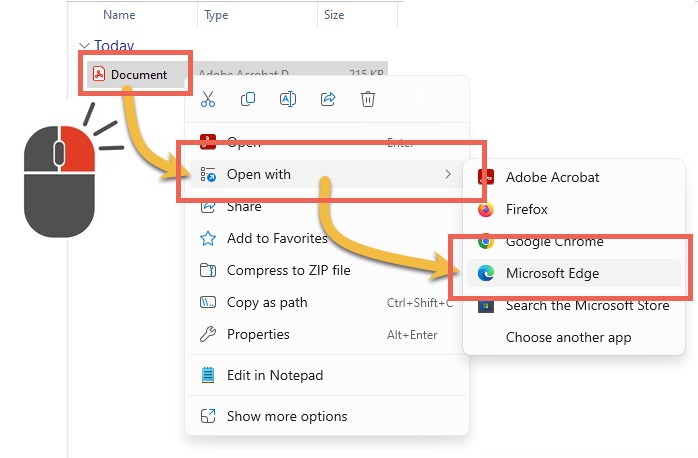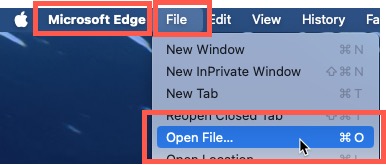Microsoft Copilot
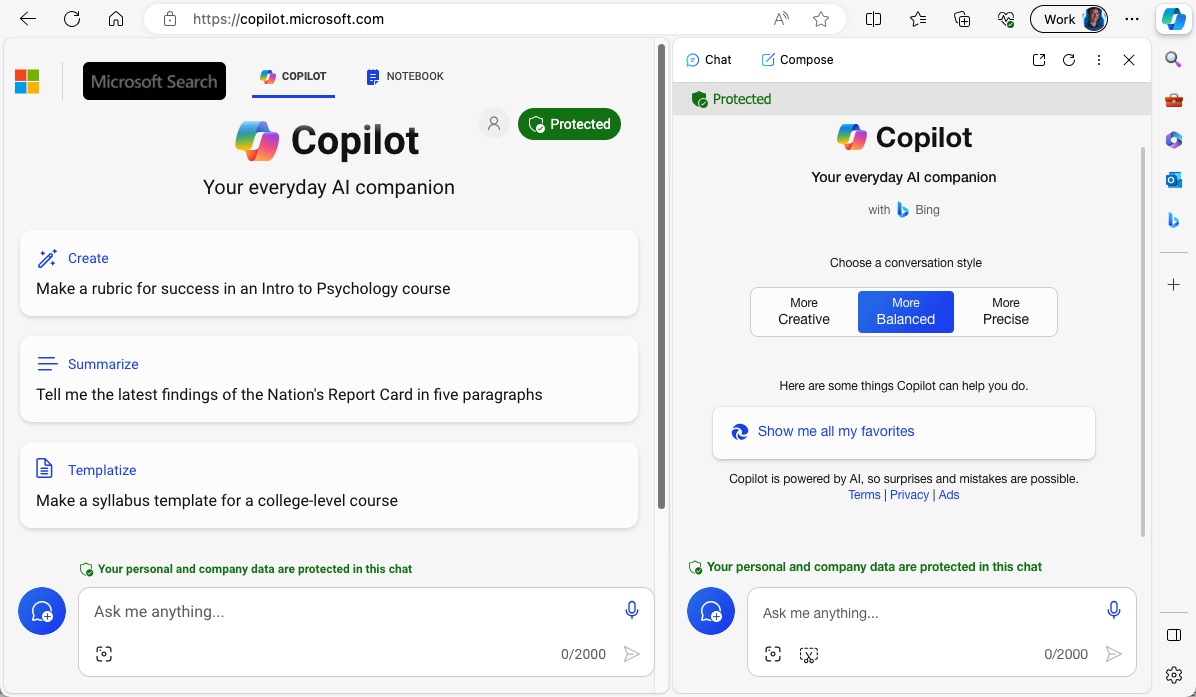
With Microsoft Copilot, you can ask the AI chatbot questions and get detailed responses with footnotes that link back to original sources. Because it is connected to Microsoft’s search engine, it has the ability to provide users with up-to-date information and real links, which may make it a better research and teaching tool than ChatGPT.
In addition to its utility as a research tool, Copilot also has creative modes, which would allow users to leverage its writing capabilities and code generation, in addition to other basic tasks, such as solving math problems.
The Microsoft Copilot service is currently available to the public, but the public version does not have full privacy and data protections; instead, the University has access to an enterprise edition, which does conform to the University’s usual privacy and data protections. This document describes how Faculty, students and staff (with access to the Microsoft toolkit) can access this protected version of Copilot.
You must be logged into your University of Toronto Microsoft 365 account.
Ensure you have properly signed into your University account and see the “protected” icon and chat confirmation, otherwise your interactions with the AI-powered chat tool will not be in the protected environment:
![]()

The Academic Toolbox helps you...
The tools in your Quercus Academic Toolbox can assist with your course delivery by Organizing Content, helping you Connect and communicate with your students, Assessing student work and providing feedback, and allowing you to Teach from a distance.
Typical Course Format?
Most tools in the Academic Toolbox can assist in both online and face-to-face courses. Many tools can provide benefits in either synchronous or asynchronous teaching. Some tools have been primarily designed for one format or another (synchronous/asynchronous), however, may be adapted for any format depending on your pedagogical goals.
To learn more about different teaching modalities, please consult our Online Teaching & Learning page, arrange a consultation with a CTSI Teaching Liason, or contact your Divisional support representative.
Where can I get more support?
Related resources / similar tools
How Are Faculty Using This Tool
Instructor Profile: Steve Easterbrook
How U of T instructors are incorporating generative AI into their teaching Steve Easterbrook, Director, School of the EnvironmentCourse details Title and Code: ENV194: Topics in Climate Change: Confronting the Climate CrisisNumber of students: 24Online/in-person/hybrid: in-personFor the Winter 2024 term, Steve Easterbrook, Director of the School of the Environment, University of Toronto wrote a policy… Read more about Instructor Profile: Steve EasterbrookInstructor Profile: Dan Zingaro
How U of T instructors are incorporating generative AI into their teaching Dan Zingaro, Associate Professor, Teaching Stream and Associate Chair (CSC) Mathematics and Computational Sciences, UTM Dan Zingaro has integrated generative AI into his teaching by encouraging students to use these tools to write computer programming code. This allows students the opportunity to collaborate and… Read more about Instructor Profile: Dan ZingaroHow to Get Started
You can access Microsoft Copilot by navigating to copilot.microsoft.com and follow the prompts to login to your University of Toronto Microsoft 365 account.
Your interactions with the AI-powered chat tool will not be in the protected environment if you do not sign in with your University of Toronto account.
How to Use This Tool
Microsoft Copilot is based on the latest OpenAI models, including GPT-4 and DALL-E 3, offering text and image generation capabilities in one unified experience.
For the full experience, we recommend the Microsoft Edge browser; using other browsers may not work or deliver a degraded experience.
Some features and highlights about what Microsoft Copilot can do for you:
- Uses web search and will provide links to the sources of information it quotes/finds.
- Your chat data is not saved and not used to train models. The data is not available to Microsoft.
- Copilot cannot access your other Microsoft 365 data. It does not work on Outlook email, Teams messages, SharePoint files, etc.
- The “Sidebar experience” with Copilot when using the Edge browser will use the current main window web page for context when asking questions on the side.
- For example, when browsing a web page, you can ask “What are the three main topics on this page?” in the sidebar
- You can view a public pdf file or open a local pdf file or document file in the main Edge browser window and ask contextual questions in the sidebar.
- For example, “Make 10 quiz questions based on chapter 3 of this pdf”.
- The main window chat is ad-based, but not targeted to your account. It may generate ads based on the search text you are entering.
- In addition to text generation, there is an image creator integration (based on DALL-E 3).
Check its work!
Remember, the answers a Generative AI tool gives may not be correct (otherwise known as hallucinations). It will be up to you to determine if the results are acceptable for your needs. Results should never be considered as the authoritative source on a topic or issue.
Instructions
-
Verify you are successfully connected to the protected environment
Look for the green “Protected” icon.
The “Protected” symbol/icon will appear in multiple places to verify you are connected to the University of Toronto Microsoft Copilot.


- When using the main browser chat, at the top right of the chat page beside your profile.
- When using the main browser chat, near the “Ask me anything…” box.
- When using the sidebar feature with the Microsoft Edge browser, near the top options.
- When using the sidebar chat feature with the Microsoft Edge browser, the “Ask me anything…” box.
If you see either “Sign in”, or a blue medal icon beside your profile icon, or the “Protected” symbol is not next to your profile icon:


This means you are not connected to the protected version of Microsoft Copilot, and your conversation and data are part of the general public Copilot version.
-
Full sign in process
It is recommended to use the Microsoft Edge browser as your Copilot application. (These instructions will follow the process when using the Edge browser, your experience may be different if you use an alternative browser.)
1. Navigate to copilot.microsoft.com and select “Sign in” near the top right corner. Select the “Sign in with a work or school account” option.

2. On the Microsoft “Sign in” screen, enter your University of Toronto email address and select “Next”.

3. Enter your UTORid information and select “log in”.

4. “Stay Signed in” – if you are using your own private secure computer you may select “yes”, otherwise if using a shared computer select “no”.

5. Accept or reject the cookie options.
6. Access the Copilot sidebar experience by selecting the Copilot icon at the top right corner of the Edge browser.

7. You may be asked to “Allow Microsoft to access page content”. Select the checkbox and the “Confirm and continue chatting”.

The option to “Allow Microsoft to access page content” can be adjusted anytime in the Copilot sidebar settings.

You may also receive a pop-up or warning that Copilot can not access your main browser windows because your Safe Search settings are too strict.
This can be fixed by browsing to bing.com, selecting the Bing menu (the hamburger menu beside your login name near the top right of the Bing search menu bar), and changing the “SafeSearch” option from “Strict”.

-
Best Practices for Instructors
Consult the Office of the Vice-Provost, Innovations in Undergraduate Education: Generative Artificial Intelligence in the Classroom: FAQ’s around topics such as Student Use of Generative AI and Instructor Use of Generative AI.
- Instructors should be clear about their expectations for using generative AI tools in their course.
- Include your expectations in your syllabus and discuss openly with your class. Is it important to indicate how your acceptable use relates to the course learning goals, so students understand the reason why they are or are not allowed to use generative AI tools. The Sample Syllabus Statement resource, produced by the OVPIUE, provides advice and examples to include in your own syllabus.
- Try it for yourself; you do not need to become an expert in using Generative AI tools. Trying out a few tools for yourself will at least give you an idea of what your students are able to do when interacting with your course content.
- Never upload or use information which may be considered confidential, sensitive, private or personal as part of prompting an AI too. And do not use material where you do not own the copyright – don’t upload other people’s work, especially student work, where you do not have written consent to do so.
- Consult university policies and guidelines. In particular, instructors can visit the OVPIUE Generative Artificial Intelligence in the Classroom: FAQ’s site for more information.
-
How can I prompt with Copilot?
How to write a prompt for AI (Microsoft Education blog)
A prompt is natural language text describing the task that an AI agent or chatbot should perform. Prompt writing (sometimes known as prompt engineering) is the process of structuring a prompt that can be interpreted and understood by the AI system. In the context of using Microsoft Copilot, a prompt can be a textual query such as “What is the Pythagoream theorem?”, or a command such as “Write a poem about the sun”, or a short statement such as “Your last response requires more details.”.
Prompt writing guidance
Start with basic information:
- Be clear and specific.
- Provide relevant context and background information.
- Provide examples.
or follow the 3 Ps:
- Provide a persona – “You are a university instructor in the department of anthropology.”
- Provide a purpose – “You are developing a 12-week graduate course on ethnographic research methods.”
- Outline your parameters – “Generate a syllabus for this course. Start with a description, followed by five learning outcomes. The learning outcomes should follow Bloom’s taxonomy. Generate topics for each of the 12 weeks. The topics should build on each-other sequentially. This is a seminar format.”
Try some more advanced prompt writing techniques:
ROLE (Act as a…)
TASK (Create a…)
REQUIREMENTS (Be sure to…)
OUTPUT (Turn into…)
• Instructor (of a course in..) • Learning Designer
• Researcher
• Committee Chair
• Tutor/TA
• Presenter
• Set of X quiz questions • Interactive quiz
• Course outline
• Active learning activity
• Lesson
• Summary
• Include • Exclude
• List
• Explain at a grade X level
• Show all steps
• Limit the length to X
• Plain text • Bulleted list
• Table
• CSV file with X number of rows
• An image
• HTML/coding
For more prompt ideas, consult these education focused prompt libraries:
- AI for education prompt library (aiforeducation.io/prompt-library)
- More useful things, Prof. Ethan Mollick (moreusefulthings.com/prompts)
- Microsoft prompts for education repository (github.com/microsoft/prompts-for-edu)
-
How to work with a local file on your computer using the Edge sidebar experience
Using the Sidebar experience with Copilot and the Edge browser, Copilot can “see” the content in the regular browser window.

This content that you can then ask Copilot questions of can be in many forms such as:
- A local file from your computer such as a pdf.
- A web page you are currently viewing or ask Copilot to search the entire site for context.
- A video, for example, while watching a YouTube video you can ask Copilot questions about that video.
- An image file, either public URL or upload an image. You can ask Copilot to explain information in a graph for example.
- A publicly available URL that is a text file such as a pdf.
How to open a local file from your computer.
(Depending on how your browser handles opening certain file types, it may or may not open properly in the Edge browser window.)On a PC:
- Using the Windows File Explorer, navigate to the file you wish to use.
- Right-click with your mouse and select “Open with” from the drop-down menu.
- Select Microsoft Edge

On a Mac:
- With the Microsoft Edge browser open, select “File” from the top menu bar and then “Open File…” .

In some instances, you may see a paperclip icon that allows you to include/attach a file. If you do not see a paperclip icon, then follow the processes shown above.

-
How to generate images, what are boosts?
Create images from text with Copilot.
You can use the built-in image creator in Copilot to create personalized, engaging visuals for all sorts of lessons or topics. You can type in a description of an image, provide additional context like location or activity, and choose an art style. Prompts can begin with “draw an image” or “create an image.”
Get started in Copilot by prompting with “create an image…”
Then build out your prompt with adjective + noun + verb + style.
Click on your favorite image to open the result in a new tab and save the image.What are boosts?
When signed in with a work or school account, boosts represent the number of prompts you can use to create images. -
Information Security considerations
This Microsoft Copilot edition (Commercial data protection for Microsoft Copilot) has been evaluated by the University’s Information Security team, and it has been deemed safe to use for up to Level 3 (Three) data avoiding the use of any private, sensitive, personally identifiable or confidential information.
Guidelines on using artificial intelligence (University of Toronto Information Security)
Furthermore, users should only use Copilot with their own content or content available publicly but not where the copyright holder has not granted permission. To read more about copyright and AI considerations, please visit this helpful resource from the University of Toronto Libraries. Where possible, de-identify (replace personally identifiable information fields with one or more artificial identifiers) or anonymize (remove personally identifiable data) data sets to avoid any privacy implications.
Guides
-
Generative Artificial Intelligence in the Classroom
Generative Artificial Intelligence in the Classroom (Office of the Vice-Provost, Innovations in Undergraduate Education – VPIUE)
-
- Sample Syllabus Statements
- About Generative AI
- Student Use of Generative AI
- Instructor Use of Generative AI
-
-
Teaching with Generative AI at U of T
Teaching with Generative AI at U of T (Centre for Teaching Support and Innovation – CTSI)
-
- Sessions and Workshops
Instructor-facing teaching and learning sessions with a focus on generative AI tools and assignments. - What’s happening at U of T
Instructor profiles and assessments and strategies being used that incorporate generative AI. - Teaching with Generative AI
What to consider when incorporating generative AI tools into your teaching. - Tips to Get You Started
Are you new to generative AI? Some suggestions to get you started. - Institutional Guidance
Institutional guidelines and resources - Resources
A curated list of resources to support instructors using generative AI tools in their teaching.
- Sessions and Workshops
-
-
Information and resources from Microsoft
Microsoft Copilot additional information and resources:
Videos
-
Introduction to MS Co-Pilot for U of T faculty and staff
Please note, this recording is from February 2024 and it is mentioned that students do not have access to MS Copilot. As of May 2024, students do have access to MS Copilot.
-
Copilot data protection: Explained by Microsoft
For the purposes of this video, “Bing Chat Enterprise” is the same as the current University of Toronto Microsoft Copilot service the University subscribes.
(Bing Chat Enterprise is the former name).For further information on the data protection, consult the Microsoft Copilot commercial data protection site.
-
How Microsoft Copilot works with your data using GPT-4
The university does not subscribe to the Microsoft “365″ Copilot service described in this video, only the “Bing Chat Enterprise” features.
For the purposes of this video, “Bing Chat Enterprise” is the same as the current University of Toronto Microsoft Copilot service the University subscribes.
(Bing Chat Enterprise is the former name).
Users should only use Copilot with their own content or content available publicly but not where the copyright holder has not granted permission. To read more about copyright and AI considerations, please visit this helpful resource from the University of Toronto Libraries. Where possible, de-identify (replace personally identifiable information fields with one or more artificial identifiers) or anonymize (remove personally identifiable data) data sets to avoid any privacy implications.
This Microsoft Copilot edition (Commercial data protection for Microsoft Copilot) has been evaluated by the University’s Information Security team, and it has been deemed safe to use for up to Level 3 (Three) data avoiding the use of any private, sensitive, personally identifiable or confidential information.
Guidelines on using artificial intelligence (University of Toronto Information Security)
Last Modified:
18 June, 2024
This work is licensed under a Creative Commons BY-NC-SA 4.0 International License
